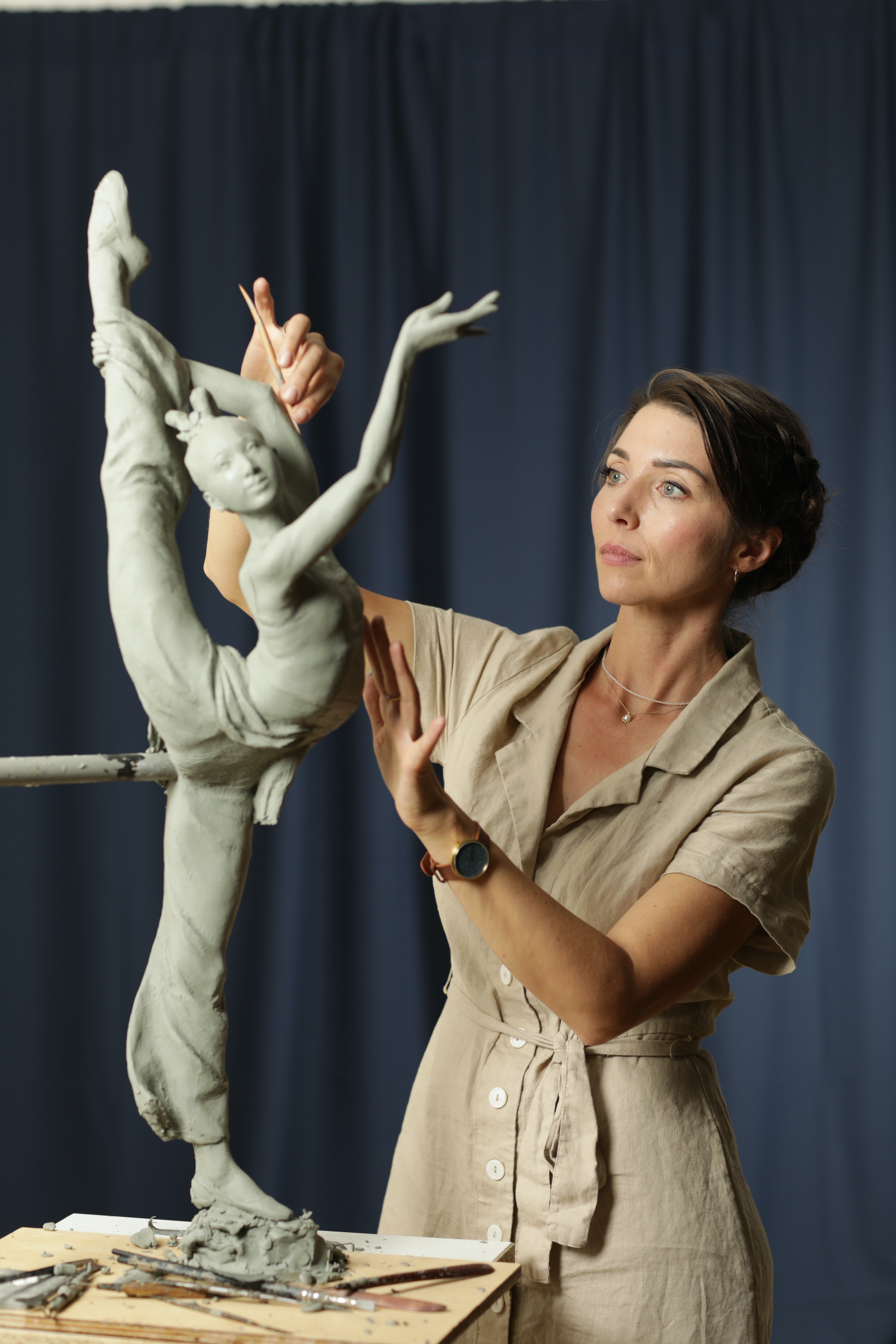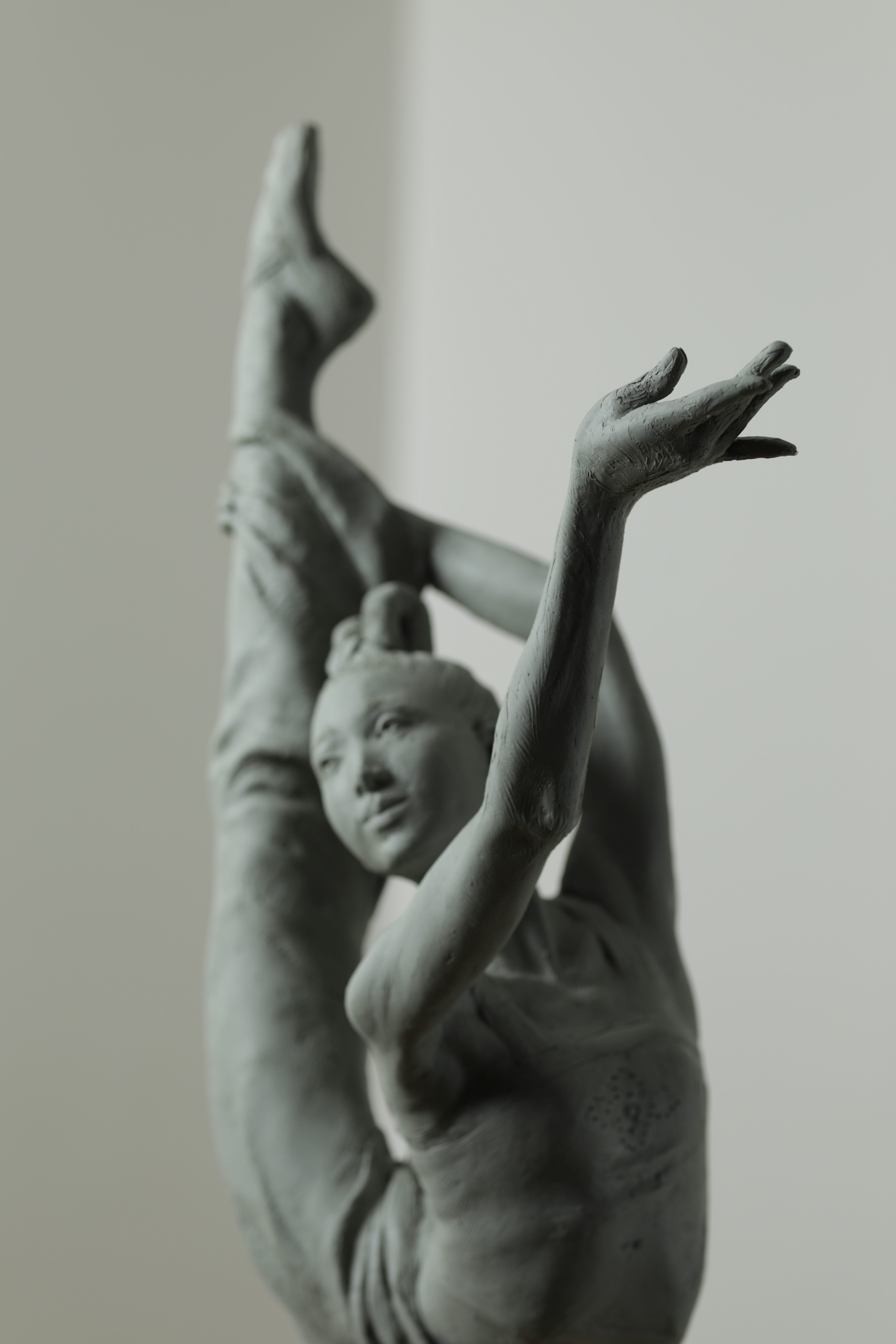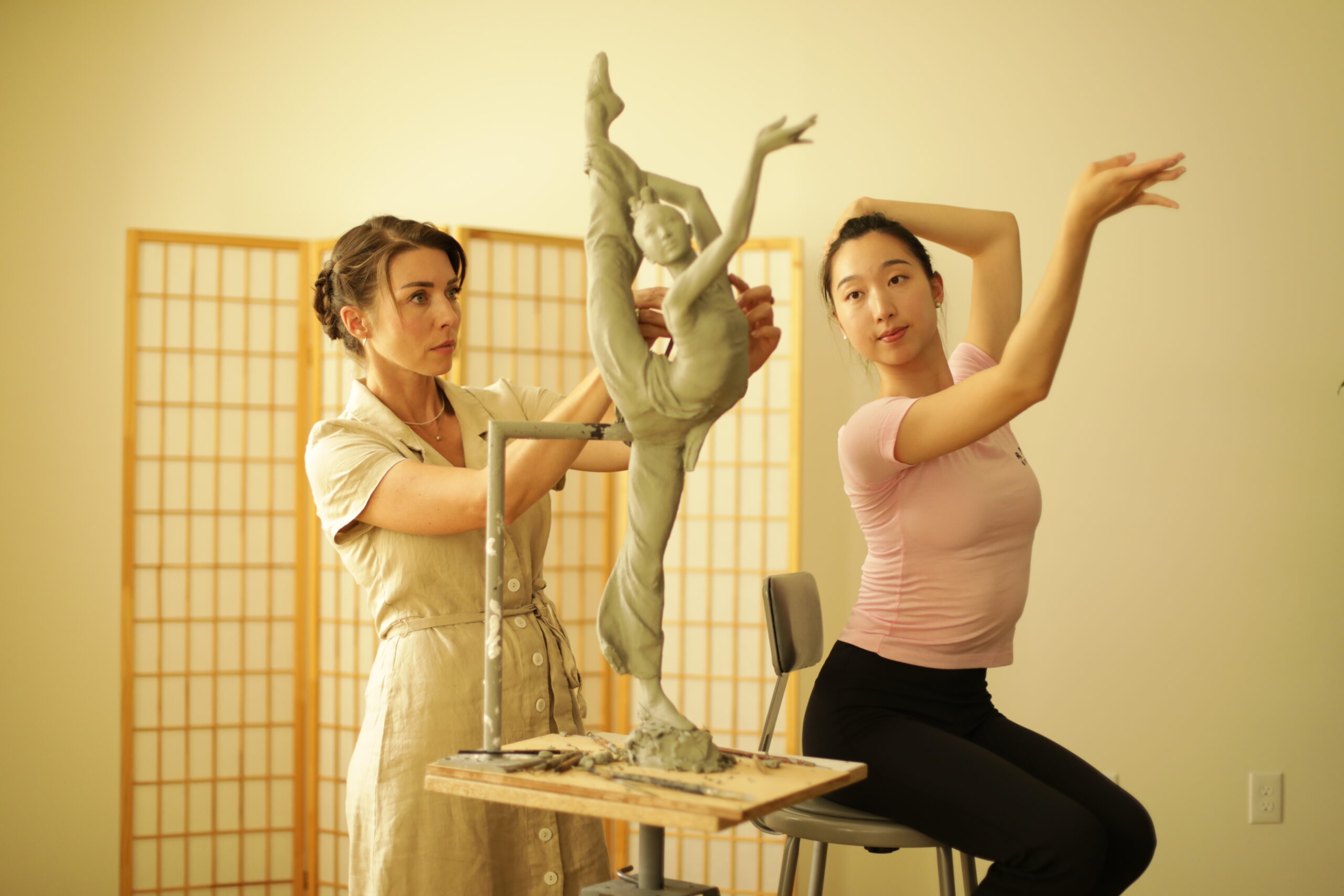Growing up in Salzburg, Austria, Johanna Schwaiger was constantly surrounded by beautiful art—from the city’s Baroque architecture to majestic fountains and public gardens. “I always thought the masters of these works were of a distant past, … had magical skills, and I thought if I could only learn a little bit of what they knew, I would be so happy,” she said.
Her father, an art teacher, taught her basic drawing and sculpting techniques. Working in clay gave her true joy. “It became my world to retreat to, whenever I felt I needed to escape somewhere, like Alice entering her wonderland,” she said. Today, Schwaiger has not only achieved her childhood dream of becoming a sculptor but also seeks to inspire the next generation of artists to create the kind of art that so moved her.
She came to the United States in 2017 to work with New Masters Academy, a subscription-based online tutorial platform for people to learn fine arts techniques. To begin with, she was invited to teach a sculpture tutorial on video. Today, she is the academy’s program director. Similar to Netflix, people can stream videos of creative artists teaching their crafts from around the world. Even top art schools and entertainment studios, including the Walt Disney Animation Studios, Ringling College of Art and Design, and the National Sculpture Society, have signed up for courses.
A Journey
It would take some time before Schwaiger could fulfill her passion for arts education. At age 15, she enrolled in a local school for sculptors. But while the school taught wood and stone carving, she wanted to learn traditional figurative sculpture, like that of the Renaissance masters, together with training in ink drawing, clay sculpting, and bronze casting. After graduating from high school, Schwaiger searched ateliers and schools in Salzburg, Vienna, and other nearby European cities, but none taught these techniques.
Some in the arts world told Schwaiger that realism had become a thing of the past, so she decided to train herself by studying the works of old masters such as Leonardo da Vinci, Michelangelo, and Raphael. Schwaiger also majored in art history at the University of Salzburg, and soon picked up commissions to paint portraits and sculpt figures for churches and graveyards, but she still felt a need for more schooling. At age 26, she discovered that the Florence Academy of Art in Italy taught the traditional curriculum. After completing her training there, she returned to her high school alma mater and began teaching a course in traditional figurative art.

Schwaiger has since made it her mission to continue the lineage of the classical art tradition, through New Masters Academy, education initiatives, and her private art studio. “I try to inspire the younger generation to hone their craft and really focus on the craft as much as possible—and make them understand that if you get strong in your craft, that’s how you become free in your expression,” she said in a recent interview held at Fei Tian College in Middletown, New York, where she taught a four-week summer sculpting class.
Now 38, Schwaiger taught her Fei Tian College students human anatomy and how to draw from a live model. To her, it’s about respecting the process pioneered by the great classical artists of the Western tradition. “You need to honor the past, what the ancestors learned and what they brought out. It’s basically taking the torch and bringing the torch further. That’s what I believe in,” said Schwaiger.
Inspired by the East
In her latest project, Schwaiger took inspiration from a different culture. Several years ago, she and her husband attended a performance by Shen Yun Performing Arts, the world’s premier classical Chinese dance company. Based in New York, the company seeks to revive the 5,000 years of Chinese civilization through dance and music. Classical Chinese dance, in particular, has a lineage tracing back to imperial courts and ancient plays. Schwaiger was touched not only by the storytelling but also by the technical prowess of the dancers. “I could see that this is the kind of excellence … that artists in the past were aiming for. And it’s really moving people’s hearts with beauty, and with excellent techniques,” she said.
Schwaiger thought of capturing through sculpture the grace and strength of the dancers she saw on stage. “What amazed me so much was the variety of dance poses that the dancers can do in sync, and so the whole choreography seems to be a language that is told on stage,” she said.
Through a mutual artist friend, Schwaiger recently met Celine Ma, a 22-year-old instructor of classical Chinese dance at Northern Academy of the Arts, a private middle and high school in Middletown, New York. Together, they thought of possible poses that the figure could take on, with Ma occasionally modeling the movements. At first, Schwaiger found it challenging to translate dance, a moving art form, into the still form of sculpture—especially conveying the light, airy movements of classical Chinese dancers. “It’s a moment in time that you’re capturing, and so the pose I picked is not a resting pose. It’s more like she’s like a flower blossoming into her pose,” said Schwaiger.
The Sculpture
One of the dancer’s legs is grounded, but the rest of her body is twisted toward the viewer. Meanwhile, her extended arm is gesturing toward the sky. “I was trying to think of how plants grow. That helped me to bring that grace into the piece … like how a flower opens its petals. That’s the image I tried to keep in mind as I was sculpting this,” said Schwaiger.

Ma said of the hand gesture: “It’s reaching high, like giving people hope and aiming for something brighter and higher.” She was not only impressed by Schwaiger’s dedication to artistry but also thrilled to see classical Chinese dance represented in another art form. “Dancers in the past—we don’t have a lot of documented footage, and a lot of techniques are lost because there’s no way that someone is passing [them] down through thousands of years,” Ma said, noting that it was thrilling to see “a sculpture that can be everlasting.”
Through working on the sculpture project, Ma also gained a newfound understanding of how Western and Eastern arts can complement each other. And through discussing the posture of the sculpture, she became more aware of the muscles she was using while dancing, and “the beauty of the human form.”
The Role of Art in Society
Ma trained in classical Chinese dance for seven years, learning the inner meanings behind the art form. She said that the training helped her to embody values that were appreciated in ancient Chinese culture, such as self-discipline, being willing to endure hardships, and having an optimistic outlook. To master the art form, “you really have to build these values within you, and it’s something that comes with your heart,” said Ma.
Schwaiger similarly believes that artists must cultivate good values in order to create something beautiful. “The artist very much has to immerse themself with the idea of beauty to communicate it to somebody else. And if the artist is thinking of the audience, wanting the audience to connect with that beauty, the person who is looking at the art is going to feel that. So that’s why I think art has such importance for society,” she said.
She also firmly believes that art has the power to elevate people. “If you’re looking at graceful things, powerful things, it’s naturally helping you to connect with these virtues. … It’s reminding people of these qualities that you should have in yourself,” she said. That’s why she hopes to one day create public art that can inspire through beauty—whether it’s sculpture in schools, hospitals, or public squares.
Schwaiger plans to cast her dancer sculpture in bronze next, using an ancient technique known as lost-wax casting, and she hopes the sculpture can be placed in a public setting one day. With art beautifying its surrounding environment, “you like to spend time there, you’d like to sit down and be there together with others, and you feel the other people that are present—and that’s very essential for our civilization,” she said.













